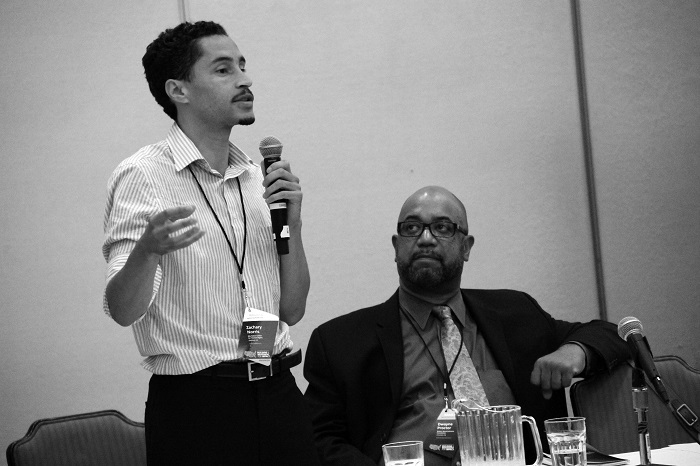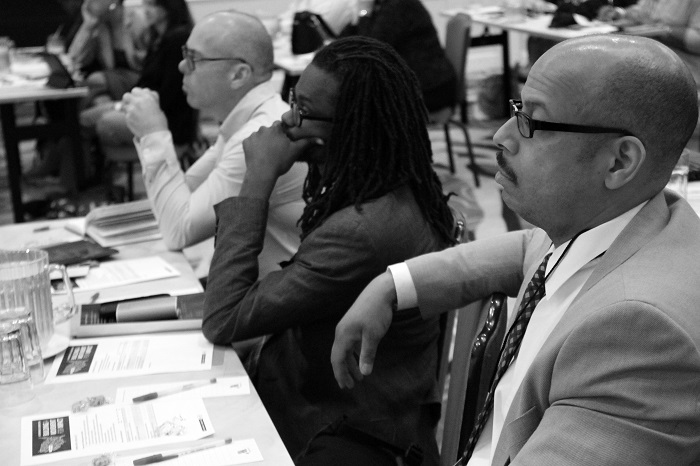Talking the Talk: Messages That Move
This session presented frameworks, data, and case studies to help participants strengthen message strategies that foster support and investment in young men of color.
Presenters/Moderators
Meredith Fenton
Fenton Communications
Amy Simon
Goodwin Simon Strategic Research
Robert Perez
Wonder: Strategies for Good
Zachary Norris
Ella Baker Center for Human Rights
Dwayne Proctor
Robert Wood Johnson Foundation
Main Points
- The public is filling in their knowledge and gaps with a lot of misinformation or their own personal real-life experiences.
- Empathy is a precursor to altruistic behavior. If anything what we are asking people to do does not affect them directly, we are asking them to be altruistic.
- To effectively engage with people, we have to acknowledge their deeply held beliefs. Otherwise, these beliefs become roadblocks.
Reasons Why People Do Not Want To Support The Men Of Color Work
- They believe it is a cultural issue and not a race issue.
- It’s a zero-sum game. Funding for boys and men of color (BMOC) work will take away from the funding for other work.
- They don’t know that there are programs actually making a difference.
- They respond, “Are you saying that just men of color have problems?”
Effective Storytelling
- Show (just) one powerful statistic to prove your program.
- Overwhelm people with stories.
- End with a powerful statistic or a powerful moral.
Key Strategies
- Look at how you create a culture of storytelling that sets you up to do strategic messaging.
- When your staff comes together, have a method to share stories.
- Work with folks who can share their own stories.
- Research shows your brain is most accepting to new information when they are embedded in stories. The majority of us use stories to explain the work we do. Experts have found that people find it more interesting. They relate to the stories and remember them.
Action Steps
- Try to frame your conversation with “all young people need . . .” Then follow with specifics. This was received better than just delivering a message with “BMOCs need . . .”
- Avoid the use of disparity language. Disparity is a jargon word that means something to folks in this room but not as much to everyone else. And don’t just use the word. Use images to show what this means. And use other words that are more value-based.
Slideshare:
Standout Quotes
"There are people who think that racism is a thing of the past. They know there is prejudice. They don’t equate systems with the reality of people."
"Understanding where people are coming from does not mean you agree with it."






